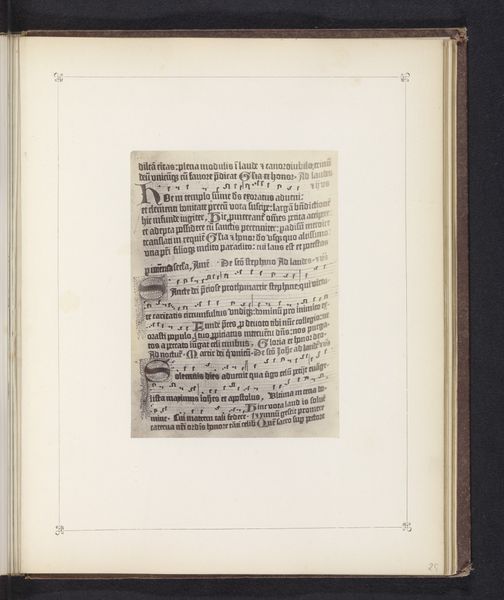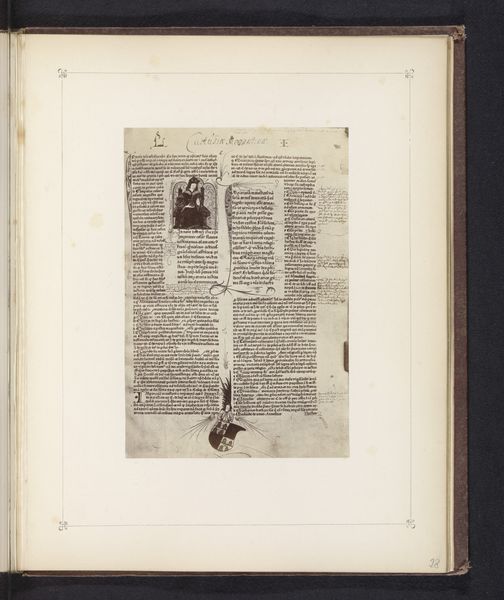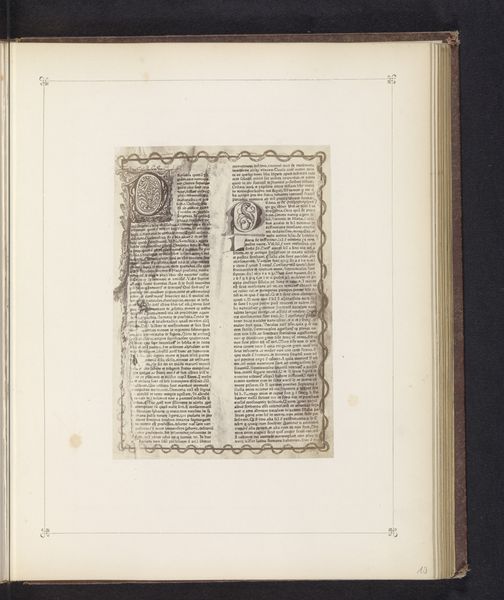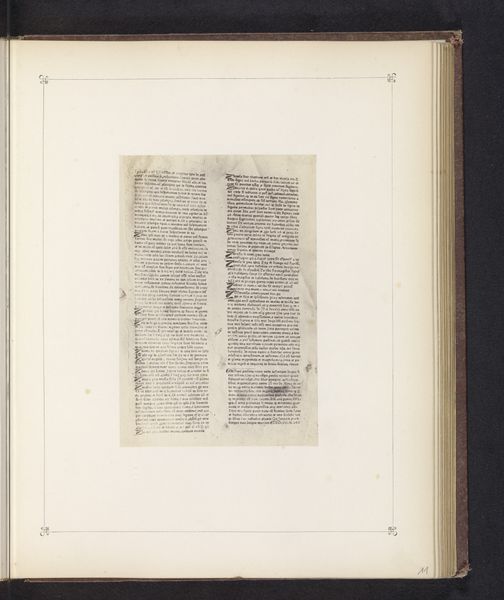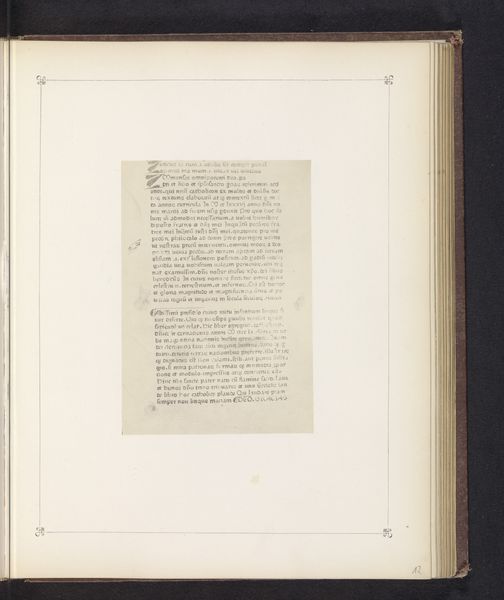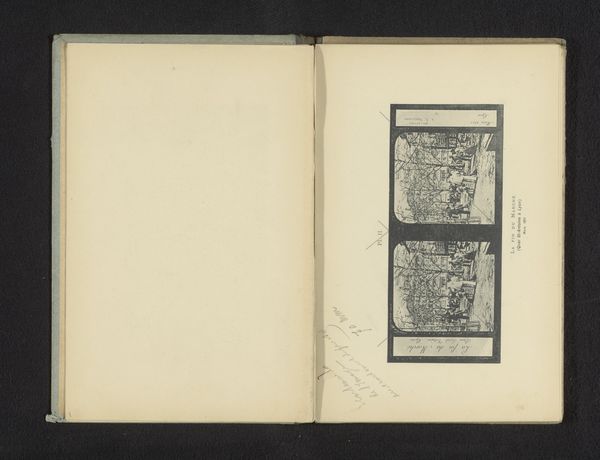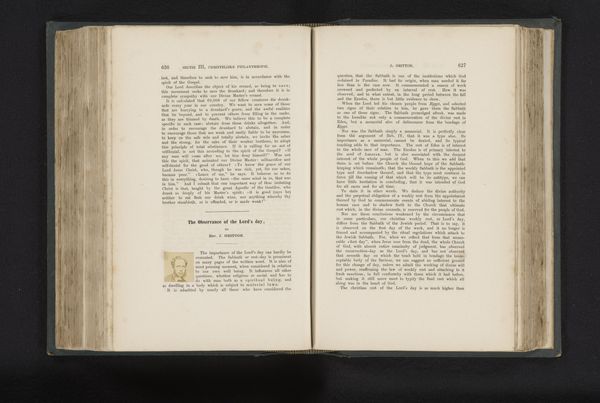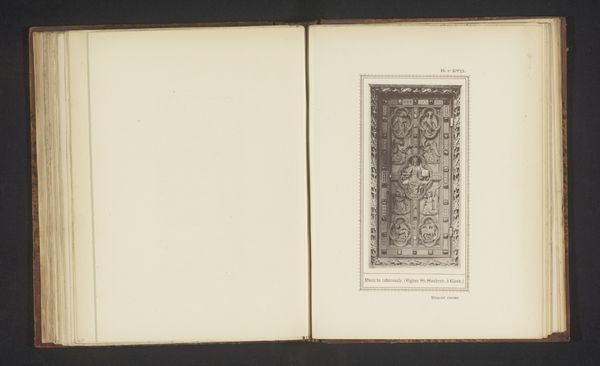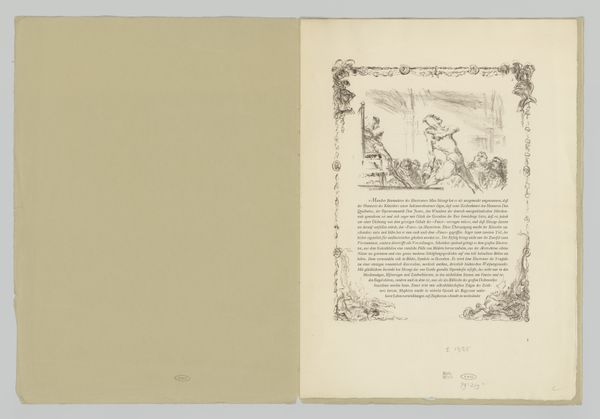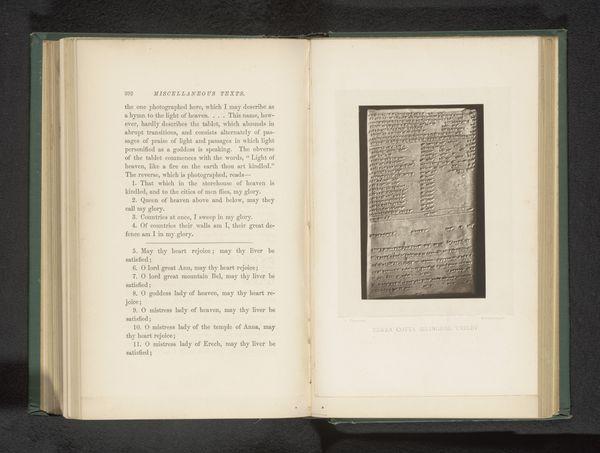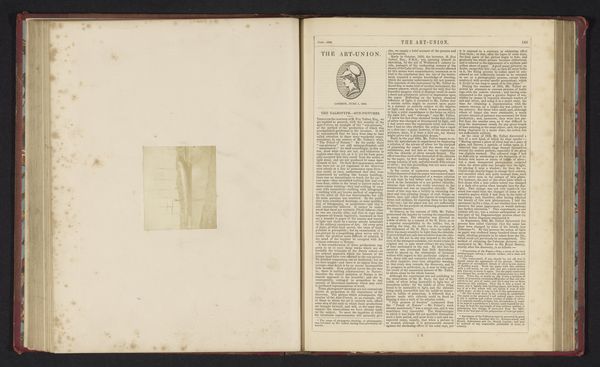
drawing, paper, ink
#
drawing
#
medieval
#
paper
#
ink
#
history-painting
#
miniature
#
calligraphy
Dimensions: height 176 mm, width 121 mm
Copyright: Rijks Museum: Open Domain
Curator: What catches my eye immediately is the detailed rendering in ink—such precise work on paper! It conveys a feeling of scholarly dedication. Editor: We're looking at a photographic reproduction, predating 1872, of the final page from the Mainz Psalter, an important example of early printing and medieval artistry. Its reproduction here underscores ideas of access and replication, who has the power to interpret such sacred texts? Curator: Ah, context! So the materiality of this reproduction changes the work; it makes this fragile artifact widely available for study, right? Tell me more about this illuminated letter and marginalia. Editor: Yes, consider how reproductions impact understanding. Now, regarding visual elements, notice how the artist—B. Erdmann in this reproduction—uses ink to create varied textures and tones, drawing our eye through the ornate lettering. That dominant letter 'P' creates a vertical spine filled with religious iconography, almost like a family tree of devotion. It visually narrates and reinforces the text. Curator: So, how might those decorative circles in the “P” reflect and reinforce existing social structures? Are they evidence of how systems of power controlled not just knowledge, but also visual representation of such knowledge? Editor: I’m less focused on social context and more with semiotics. Those circular details can also function as pure ornament, enhancing visual appeal with recurring forms. The linear script provides horizontal motion that complements the ‘P’, and together they construct an elegant architecture within the frame. This aesthetic of organization contributes to a sense of clarity. Curator: I’m finding that structure anything but “clear”. Consider the labor to reproduce such sacred texts. As such the choices behind such organization in design reflects and upholds religious ideology—privileging it—within systems of cultural production at the time. Editor: Still, its visual structure is remarkable. Examining Erdmann’s deliberate execution unveils aesthetic systems. It goes beyond time and reflects human design’s inclination to classify the beautiful. Curator: Your semiotic and formal readings emphasize those intentions in a beautiful vacuum, when in reality the very systems reflect and further complicate and sometimes obscure art’s significance within wider social realities. Editor: Perhaps so, but both visual language and historic context work hand-in-hand—allowing new generations an approach to access and reinterpret historic design.
Comments
No comments
Be the first to comment and join the conversation on the ultimate creative platform.
